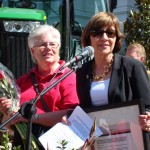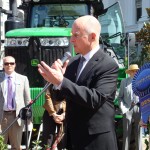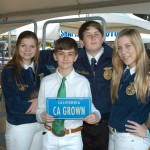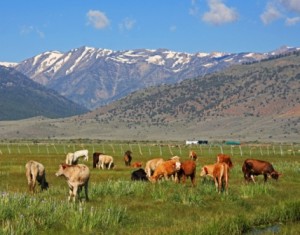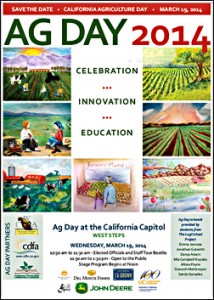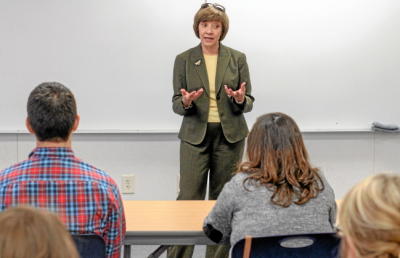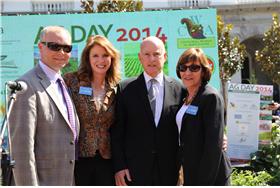
Left to right, Growing California Chair Kasey Cronquist, Visit California CEO Caroline Beteta, Governor Brown and CDFA Secretary Karen Ross.
Driven by the farm-to-fork movement and a growing interest among travelers for culinary experiences, Visit California is partnering with California Grown to launch a new marketing campaign, “California, Always in Season.”
The two entities announced their partnership at the campaign launch during California Agriculture Day 2014 at the State Capitol.
Tourists in California spent $28.5 billion on food and beverages in 2012, making it the largest segment in the state’s tourism economy. The “California, Always in Season” program is designed to market California’s agricultural abundance and pioneering and innovative spirit of the state’s chefs, farmers and ranchers.
“This partnership further defines California as the premier destination for culinary travelers,” said Caroline Beteta, president & CEO of Visit California. “Today’s travelers seek culinary experiences from farm tours and farm-to-fork dinners, to artisan purveyors, wine festivals and culinary tours. When it comes to travel, food and agriculture – California is always in season.”
“We are excited about all of the opportunities, benefits and attention that this newly formed relationship with Visit California will bring California agriculture,” explains California Grown Chair Kasey Cronquist. “Our ‘California, Always in Season’ campaign is just the first example of this new vision highlighting the valuable cultural and economic influence our farmers and ranchers have on the Golden State.”
The cornerstone of this campaign is a $1 million media buy with Food & Wine magazine, which will deliver more than 58 million impressions through print spreads, videos, custom media rich content, targeted digital media and a co-branded landing page on Food & Wine’s website. Much of the content in the magazine will focus on the relationship between California farmers and their collaboration with local chefs, the diversity and abundance of specialty crops throughout the state as well as stories that demonstrate that California’s culinary pioneers are part of the fabric that makes the state an iconic destination.
The Golden State grows more than 400 commodities and produces 90 percent of the wine and half of the fruit, nuts and vegetables grown in the United States. The state’s commitment to agriculture and agritourism is demonstrated by California’s passionate farmers, ranchers, chefs and winemakers 365 days a year.
“Ranchers and farmers are developing their own cult status and becoming the next rock stars of the culinary scene,” Beteta said. “They are the ones that help California deliver on its promise of being the ultimate dreamland. It’s these passionate people who make this state’s culinary scene the best in the world.”
The first issue of Food & Wine featuring the “California, Always in Season” content is on newsstands now. For a look at the campaign, visit www.FoodandWine.com/California. For more information on culinary experiences in California, visit www.VisitCalifornia.com.
This project is possible with funding from the California Department of Food and Agriculture’s Specialty Crop Block Grant Program.
Visit California (formerly known as the California Travel & Tourism Commission) is a non-profit organization with a mission to develop and maintain marketing programs – in partnership with the state’s travel industry – that keep California top-of-mind as a premier travel destination. According to Visit California, travel and tourism expenditures total $112 billion annually in California, support jobs for 917,000 Californians and generate $6.6 billion in state and local tax revenues. For more information about Visit California and for a free California Official State Visitor’s Guide, go to www.visitcalifornia.com. For story ideas, media information, downloadable images and more, go to media.visitcalifornia.com.
California Grown (also known as the Buy California Marketing Agreement, BCMA) is a joint effort of agricultural industry groups representing the products of California’s farms, ranches, forests and fisheries. Working as an advisory board to the California Department of Food and Agriculture, BCMA brings together industry and government resources to increase the awareness, consumption and value of California agricultural products, helping the state’s consumers enjoy the best of the California lifestyle. California Grown is funded through public and private contributions by the U.S. Department of Agriculture, the California Department of Food and Agriculture, and California agricultural organizations. For more information, visitwww.californiagrown.org.













